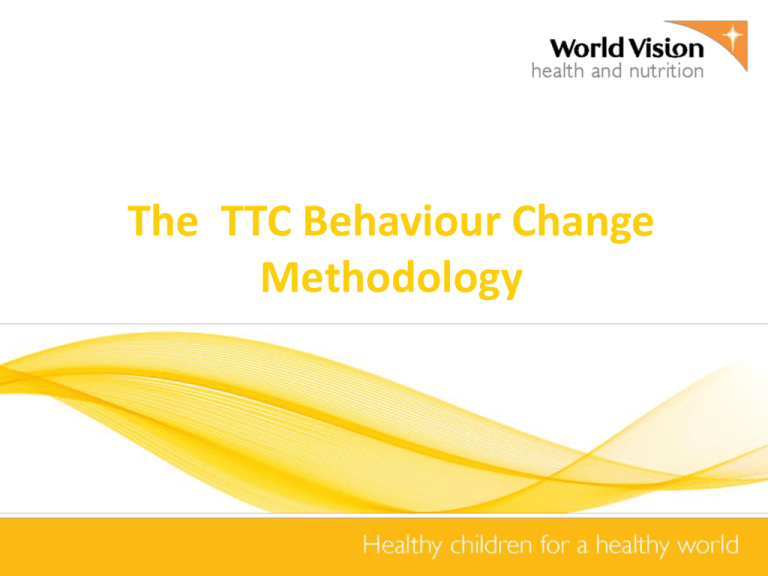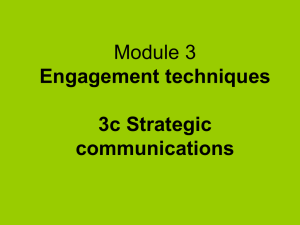Publication
advertisement

The TTC Behaviour Change Methodology Process of Behaviour Change TTC Methodology: Household Counselling Steps Pre-step: Open dialogue – mother and family to raise worries, health problems (apply PFA) Step 1: Review previous meeting and actions that the household agreed to try Step 2: Problem Story and Guiding Questions (Guiding Qs lead users from analyzing as outsiders, to personalizing the issues) Step 3: Positive Story and Guiding Questions (Guiding Qs lead users from understanding the benefits of the actions, to personalizing) Step 4: Dialogue and “Negotiation”, using Household Handbook (mark the actions) Stories at heart of counseling/ dialogue • Stories cover all health messages, with guiding questions to enable discussion • The stories link cause and consequence without over-personalizing • Stories show positive and negative male role models influencing the outcome for the family • Useful for addressing difficult issues, e.g. HIV, male behaviour, financial issues Most common barriers to behaviour change • • • • • • Knowledge & skills: I don’t think I can do it, I don’t know how to do it (I don’t have the knowledge or skills) Family / community influence – Other people don’t think I should do it (my family or community won’t approve). This is against my culture. Access – I cannot get there, it is too expensive or if I get there the facility won’t have it. Fear – I think it might be dangerous to do it, e.g. if I deliver in the facility it will be more dangerous, if I go for HIV testing, I’m afraid my husband will reject / blame me. Beliefs about behaviour and risks – If I do X it won’t be effective, it won’t happen to me. E.g. if my child gets diarrhoea, it won’t be a serious problem. Reminders / cues – people forget to do the behaviour unless they are reminded, e.g. forget to wash hands with soap unless they are reminded e.g. forget to attend a clinic on a date. Using dialogue – to get to the root causes WHY-WHY question – getting to the underlying causes However – remember that judgmental questions can often be taken badly. For this reason we recommend the question: “What makes this difficult?” followed by “and why do you think that is?” (repeat until you get to the root). Why? Why? Root cause Underlying reason Root cause Identify the issue Root cause Underlying reason Root cause Giving unsolicited advice…. Empowering to find a solution Household Counseling Steps Record what they are already doing – and praise their efforts ENCOURAGE If they are not doing a practice, begin the dialogue - What makes it difficult to do this? - Why is that BARRIER ANALYSIS ROOT CAUSE DISCOVERY - What might make is easier for you to do? EMPOWER - How can i/we/ your family or community support you to help that to happen? SUPPORT Agree the action to be taken and record – praise their decision AFFIRM Not all problems have solutions • Link to COMM • Link to CVA • Enable them to be heard




